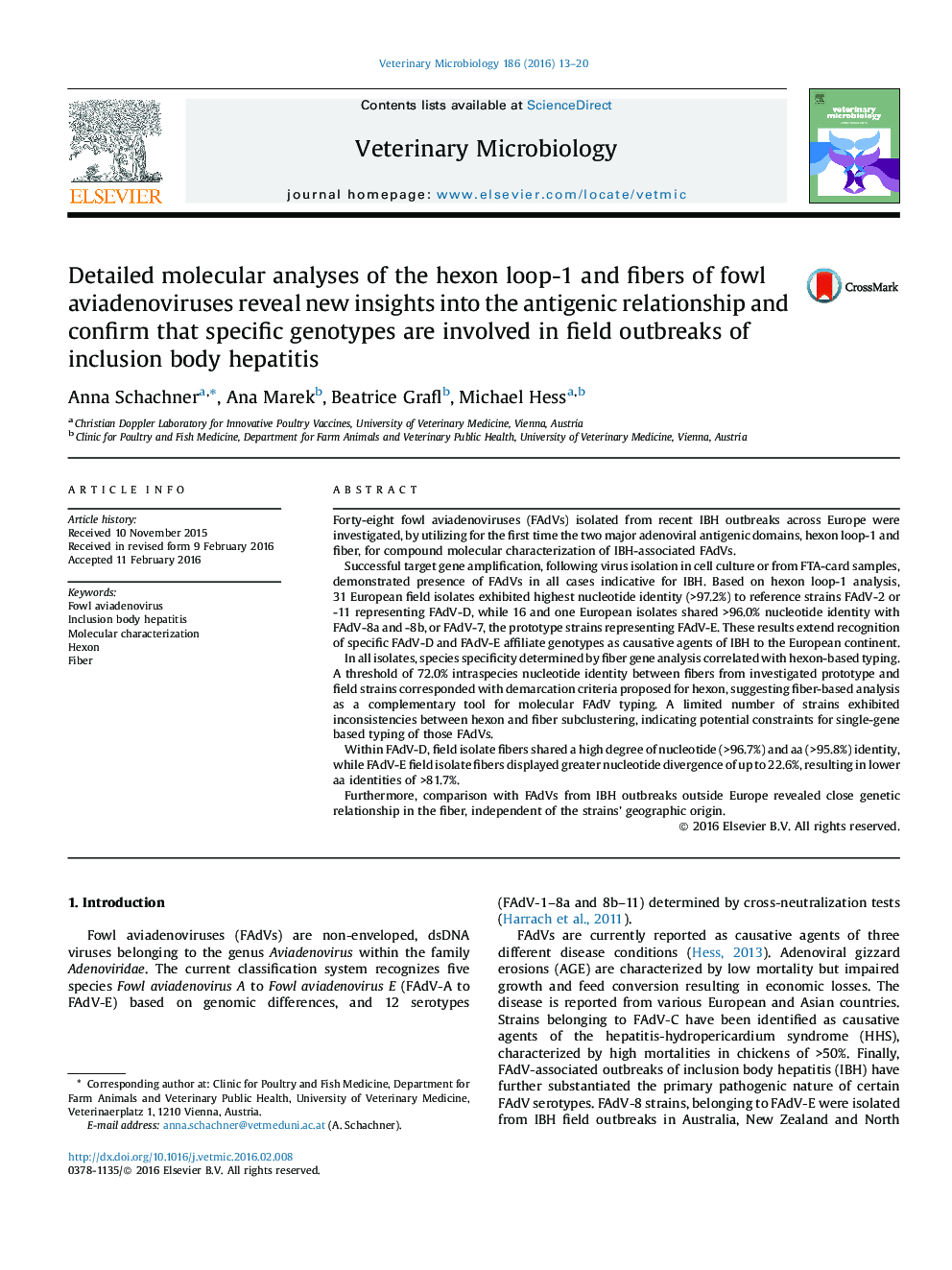| Article ID | Journal | Published Year | Pages | File Type |
|---|---|---|---|---|
| 5799691 | Veterinary Microbiology | 2016 | 8 Pages |
â¢FAdVs from a defined disease background were investigated by combined gene analyses.â¢The study comprised 48 EU and 9 non-EU FAdVs isolated from inclusion body hepatitis.â¢Hexon-based typing revealed the exclusive role of certain FAdV-D/-E genotypes in IBH.â¢Fiber analysis confirmed species identification, but revealed subtyping discrepancies.â¢Close relationship within both genes, characteristic for field strains of FAdV-D.
Forty-eight fowl aviadenoviruses (FAdVs) isolated from recent IBH outbreaks across Europe were investigated, by utilizing for the first time the two major adenoviral antigenic domains, hexon loop-1 and fiber, for compound molecular characterization of IBH-associated FAdVs.Successful target gene amplification, following virus isolation in cell culture or from FTA-card samples, demonstrated presence of FAdVs in all cases indicative for IBH. Based on hexon loop-1 analysis, 31 European field isolates exhibited highest nucleotide identity (>97.2%) to reference strains FAdV-2 or -11 representing FAdV-D, while 16 and one European isolates shared >96.0% nucleotide identity with FAdV-8a and -8b, or FAdV-7, the prototype strains representing FAdV-E. These results extend recognition of specific FAdV-D and FAdV-E affiliate genotypes as causative agents of IBH to the European continent.In all isolates, species specificity determined by fiber gene analysis correlated with hexon-based typing. A threshold of 72.0% intraspecies nucleotide identity between fibers from investigated prototype and field strains corresponded with demarcation criteria proposed for hexon, suggesting fiber-based analysis as a complementary tool for molecular FAdV typing. A limited number of strains exhibited inconsistencies between hexon and fiber subclustering, indicating potential constraints for single-gene based typing of those FAdVs.Within FAdV-D, field isolate fibers shared a high degree of nucleotide (>96.7%) and aa (>95.8%) identity, while FAdV-E field isolate fibers displayed greater nucleotide divergence of up to 22.6%, resulting in lower aa identities of >81.7%.Furthermore, comparison with FAdVs from IBH outbreaks outside Europe revealed close genetic relationship in the fiber, independent of the strains' geographic origin.
